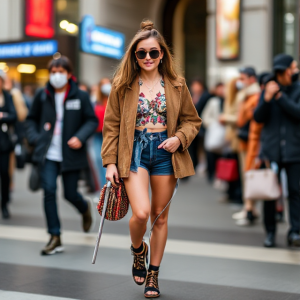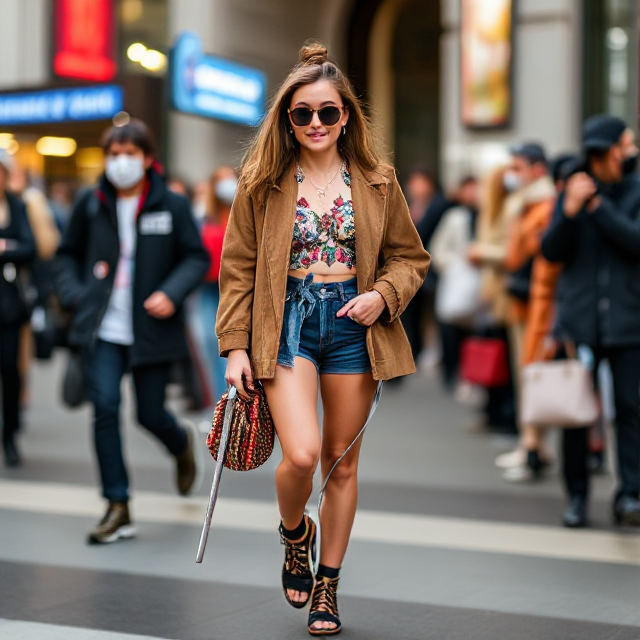
Fashion is an ever-evolving industry influenced by culture, technology, and consumer behavior. In the digital age, trends spread faster than ever, driven by social media platforms, influencers, and celebrity endorsements. For fashion brands and entrepreneurs, leveraging viral fashion trends can mean the difference between staying relevant and fading into obscurity. This article explores how businesses can effectively capitalize on viral fashion trends to maximize visibility, engagement, and revenue.
Understanding Viral Fashion Trends
Viral fashion trends emerge due to various factors, including:
- Social Media Influence – Platforms like Instagram, TikTok, and Pinterest serve as trend incubators, where influencers and fashion-forward users dictate what’s in vogue.
- Celebrity Endorsements – High-profile celebrities can catapult a style into the mainstream overnight.
- Pop Culture and Media – TV shows, music videos, and movies often set trends that fans eagerly adopt.
- Sustainability and Ethical Fashion – Eco-conscious trends such as upcycled clothing and slow fashion are gaining traction due to increased environmental awareness.
- Fashion Weeks and Runway Shows – Major fashion events showcase emerging styles that eventually filter down to mass-market retailers.
Steps to Leverage Viral Fashion Trends
1. Stay Ahead of the Curve
To successfully capitalize on trends, brands must anticipate them before they reach peak popularity. Strategies include:
- Monitoring Social Media Hashtags & Analytics – Tracking trending hashtags and engagement metrics can provide insights into emerging styles.
- Following Influencers & Trendsetters – Observing fashion bloggers, celebrities, and industry leaders helps predict what will become mainstream.
- Analyzing Market Research & Data – Tools like Google Trends and fashion forecasting platforms (e.g., WGSN) can help businesses make informed decisions.
2. Adapt Quickly and Innovatively
Speed is critical when leveraging viral fashion trends. Brands should:
- Develop a Quick Response Supply Chain – Fast production cycles allow businesses to launch trend-based collections before consumer interest fades.
- Create Limited Edition Collections – Scarcity drives demand, making limited drops an effective strategy.
- Blend Trends with Brand Identity – Instead of blindly following trends, brands should incorporate elements that align with their aesthetic and values.
3. Leverage Digital Marketing and Influencer Collaborations
Promotion plays a significant role in amplifying a viral trend. Brands should:
- Partner with Influencers – Collaborating with fashion influencers increases reach and credibility.
- Utilize User-Generated Content (UGC) – Encouraging customers to share their styling of a trend boosts organic engagement.
- Optimize Social Media Campaigns – Platforms like Instagram Reels and TikTok favor video content, making them ideal for showcasing trending styles.
4. Utilize E-commerce and Omnichannel Strategies
Online retail is essential for capitalizing on viral trends. Best practices include:
- Offering Seamless Online Shopping Experiences – User-friendly websites and mobile apps improve conversions.
- Implementing Trend-Focused SEO – Incorporating trending keywords into product descriptions and blog content boosts visibility.
- Using Data-Driven Personalized Recommendations – AI-driven tools can suggest trend-based products to customers.
5. Embrace Sustainability in Trend Adoption
Sustainable fashion is not just a passing trend but a growing movement. Brands can align with eco-conscious consumers by:
- Promoting Sustainable Materials – Using organic, recycled, or biodegradable fabrics.
- Encouraging Slow Fashion – Designing timeless, high-quality pieces that remain stylish beyond a single season.
- Providing Recycling & Upcycling Initiatives – Offering buy-back programs or DIY styling guides to extend a product’s lifecycle.
Case Studies: Brands That Mastered Viral Trends
Shein’s Fast Fashion Success
Shein is a prime example of a brand that swiftly adapts to viral fashion trends, using AI-driven analytics to predict consumer preferences and launching affordable trend-based collections within weeks.
Nike’s Limited-Edition Sneaker Drops
Nike has perfected the art of creating hype through limited sneaker releases, leveraging collaborations with celebrities and influencers to drive demand.
Thrift Stores and the Rise of Vintage Fashion
The increasing demand for thrifted and vintage clothing highlights how second-hand stores have capitalized on sustainability trends by curating unique, trendy collections.
Challenges of Leveraging Viral Fashion Trends
While chasing trends offers significant opportunities, it also comes with challenges:
- Short-Lived Popularity – Trends fade quickly, and excessive reliance on them can lead to unsustainable business practices.
- Over-Saturation – Mass production of a trend can dilute its appeal.
- Ethical Concerns – Fast fashion brands often face criticism for poor labor practices and environmental harm.
- Brand Identity Dilution – Excessive trend adoption may cause a brand to lose its distinct identity.
Leveraging viral fashion trends is an essential strategy for fashion brands and entrepreneurs looking to remain competitive. By staying informed, acting swiftly, and integrating trends with a brand’s core identity, businesses can capture consumer interest while maintaining sustainability and ethical responsibility. With the right mix of innovation, digital marketing, and strategic collaborations, fashion brands can successfully turn viral trends into long-term success.
